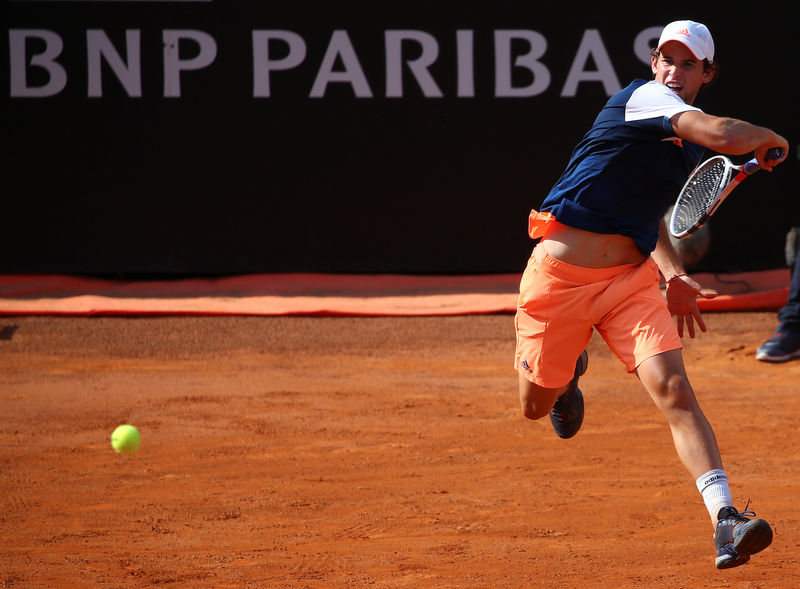By Ossian Shine
(Reuters) - Modern wisdom suggests a sure-fire formula for success in tennis. The steps are few, and simple: deliver an inch-perfect serve to set up a heavy forehand, and... boom.
The whip-cracked forehand - inside out, crosscourt or down the line - has been the biggest of big shots for recent generations.
But is that mega-weapon on the wane as the modern game evolves?
From Pete Sampras's running flat hit to Rafa Nadal's lasso-swung shot, the big forehand has been central to success for the sport's greatest names.
The same goes for the women's game, in which Steffi Graf's crunched drive -- struck in mid-air -- was a shot for the ages: not for nothing was her nickname 'Fraulein Forehand'.
Fans can expect the weapon to be wielded liberally again when the French Open gets under way on May 28.
Samantha Stosur, who clubbed her forehand all the way to a grand slam title at the U.S. Open in 2011 and made the last four at last year's Roland Garros, says she for one will be using the old one-two.
"They’re my weapons anyway," she told Reuters on the sidelines of a WTA event in Stuttgart. "And with my spin it helps, using my kick serve to set up the point and then finishing it with my forehand."
But times change, and the importance of the big serve/ massive forehand double-act may be on the wane, the man with the fastest-ever forehand told Reuters.
"LEGITIMATE WEAPON"
James Blake smacked a 125mph (210kph) piledriver at the 2011 U.S. Open, and used the shot to climb to number four in the world rankings.
"The big forehand can always be a benefit, but I think the main thing is having at least one legitimate weapon," the now-retired 37-year-old told Reuters.
"The game goes in cycles sometimes. The best two players in the game the last two years have been the best at neutralizing weapons.
"(Andy) Murray and (Novak) Djokovic have been able to defend the weapons of other players and that has set them apart.
"All the players near the top of the game move well, so it's not easy to have a weapon that can be effective.
"But those that have a huge forehand (Nadal, Federer, Sock) or a huge serve (Raonic, Isner) have an advantage to play offence at any time."
Leading young gun Dominic Thiem agrees the forehand will be a key weapon at Roland Garros, but for him the pace is not the vital element - it is the sharp angles he can get off that, and the backhand side.
"Short angle crosscourt, because it's the shot which moves the opponent the most and gets him most tired," the top-10 ace told Reuters. "Probably in the long two weeks of the French Open it's the most important shot."
Andy Murray, on the other hand, will be relying on his serve. "I think if I am serving better, it gives me a much better chance," he told reporters.
"I haven't been losing matches due to my return game, I've been breaking serve a decent amount, but I think against Thiem (in Barcelona) I won 54 percent of my first serves, whereas last year my average for the season was in the mid to high 70s.
"That's a huge difference... That's the most important thing now for me," said the world number one, who lost that semi-final encounter in three sets.
Perhaps a better candidate for key weapon in today's sporting arena might simply be physical fitness.
"The most important thing for me is to start in good physical condition," Frenchman Richard Gasquet told Reuters.

"To run around a clay court, best of five, you need to win seven matches, you need to be ready for that. All shots are very important to win against guys like Rafa, Djokovic, Murray, it’s not just one shot, everything needs to be 100 percent."
(editing by John Stonestreet)